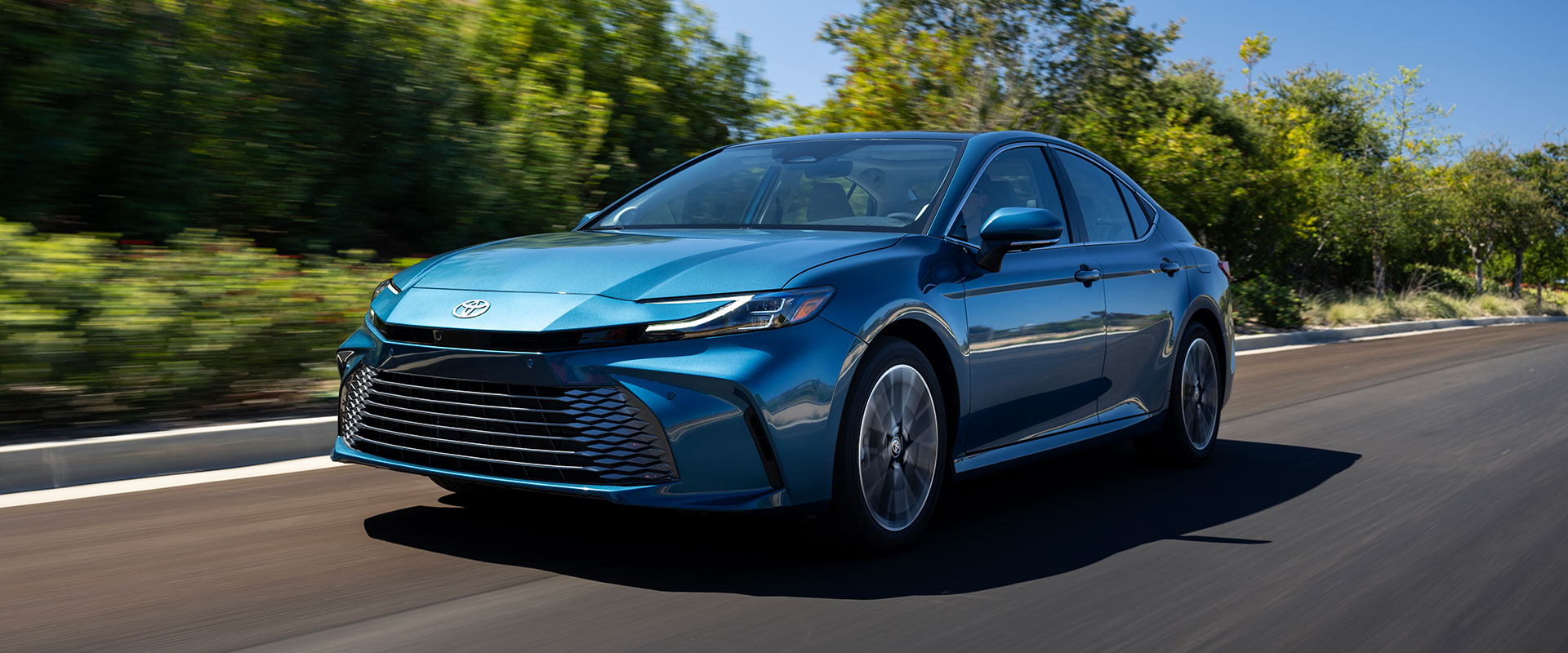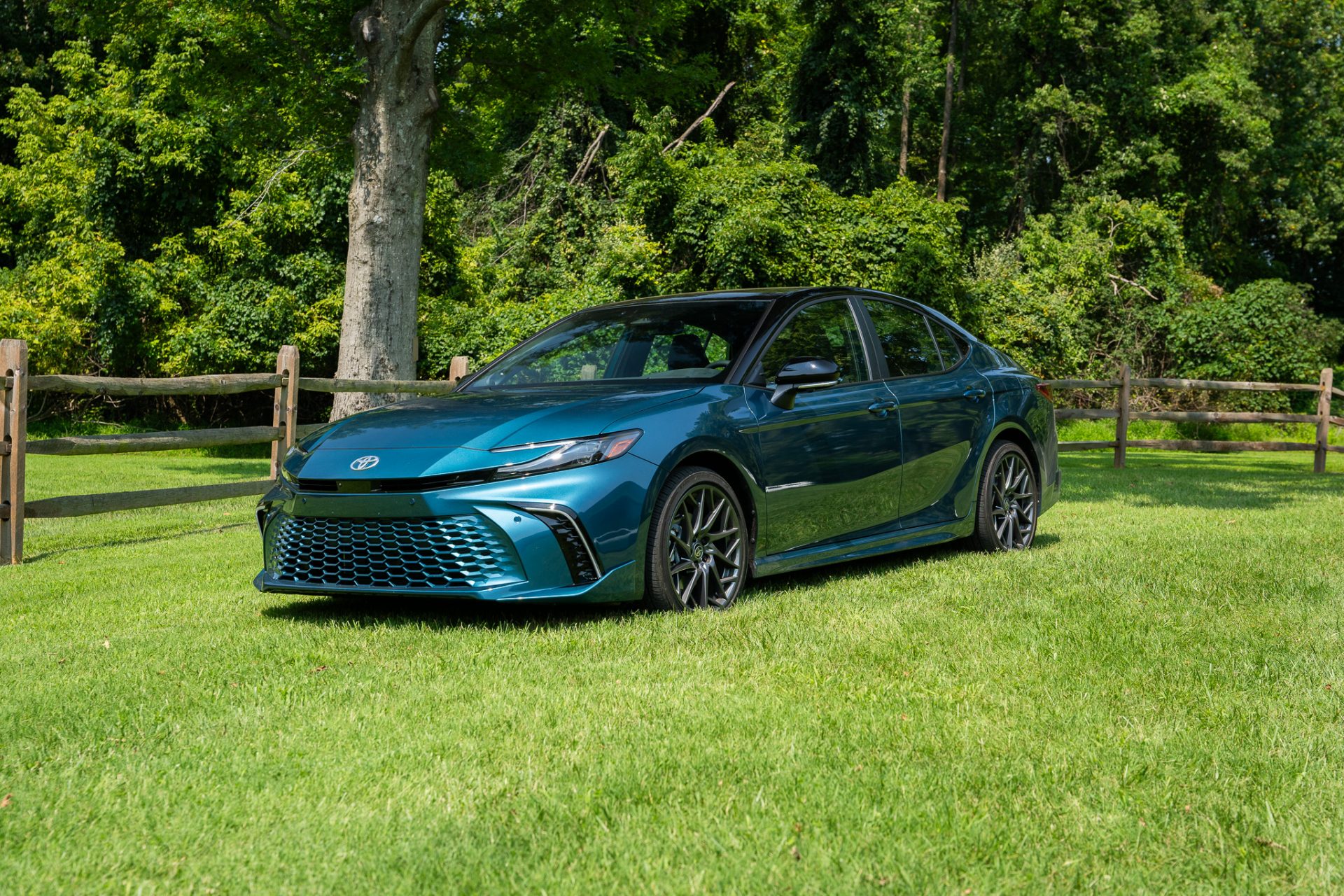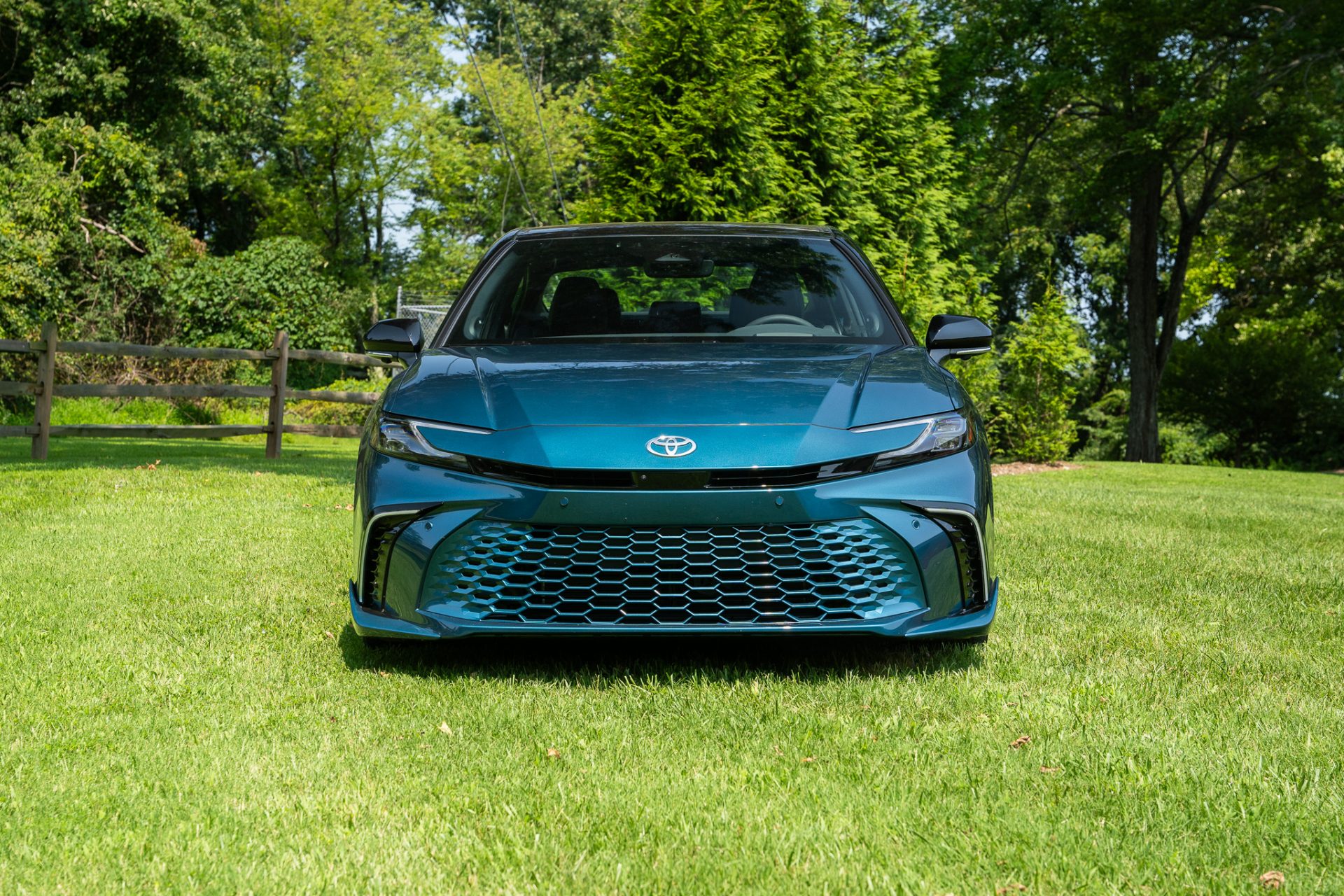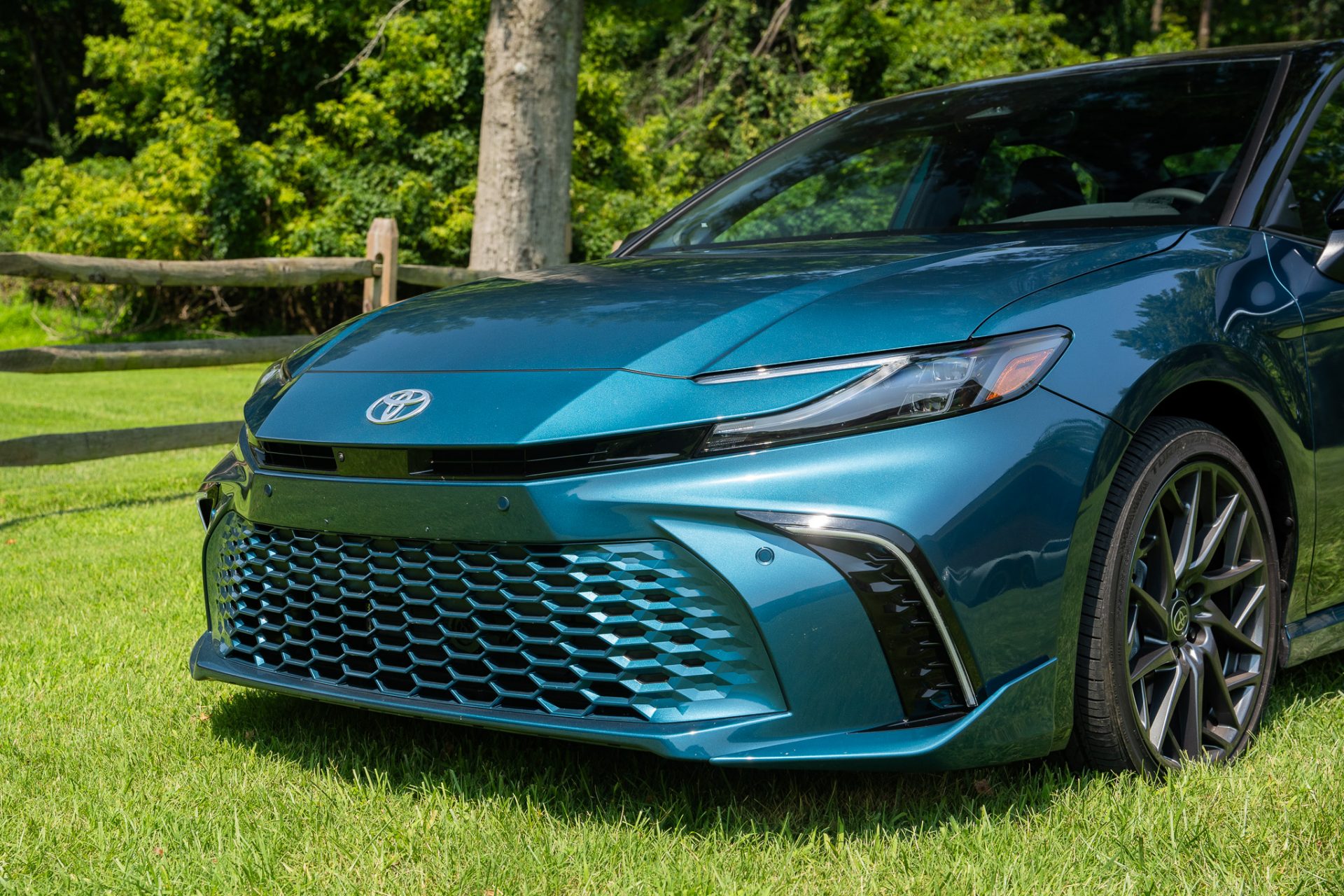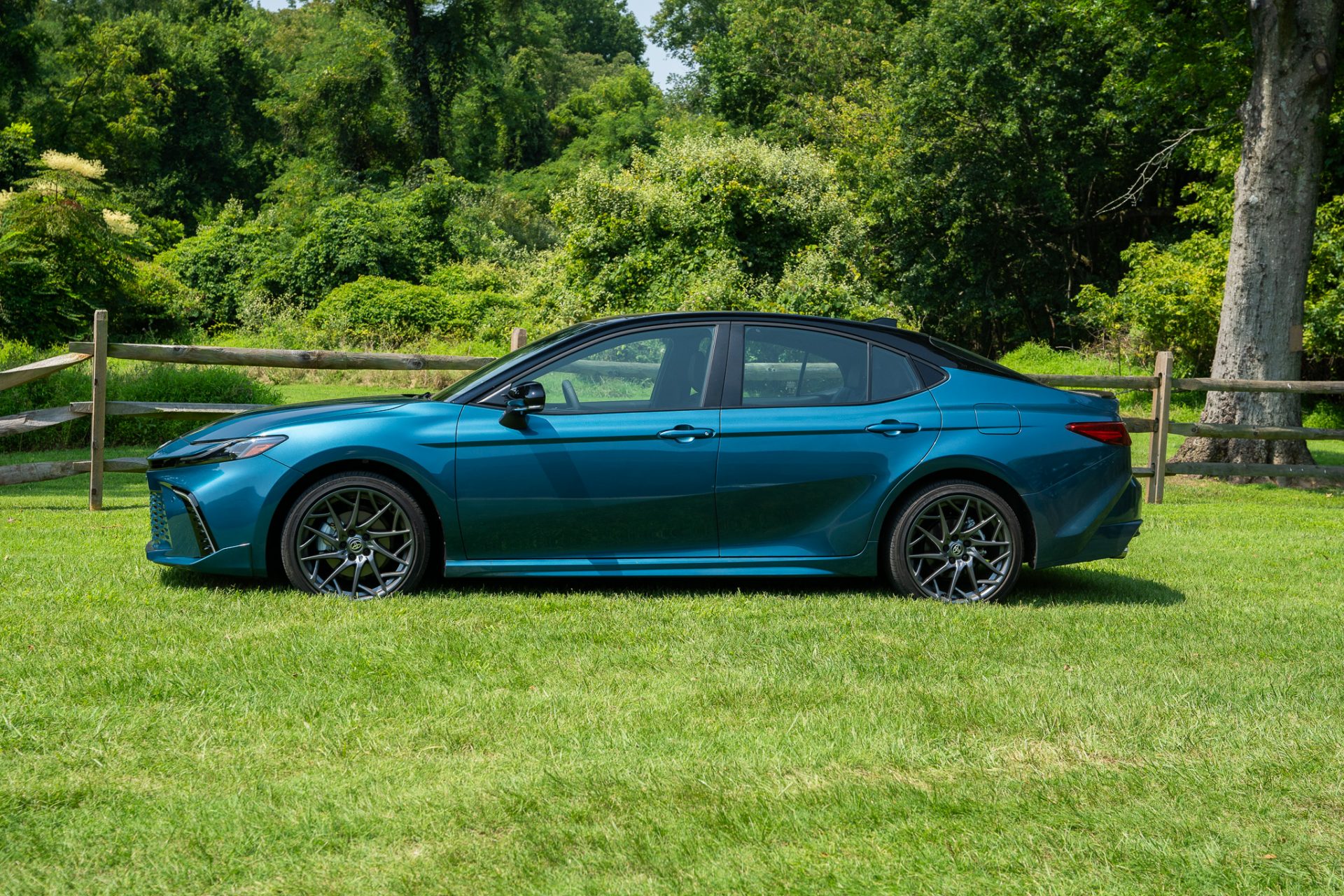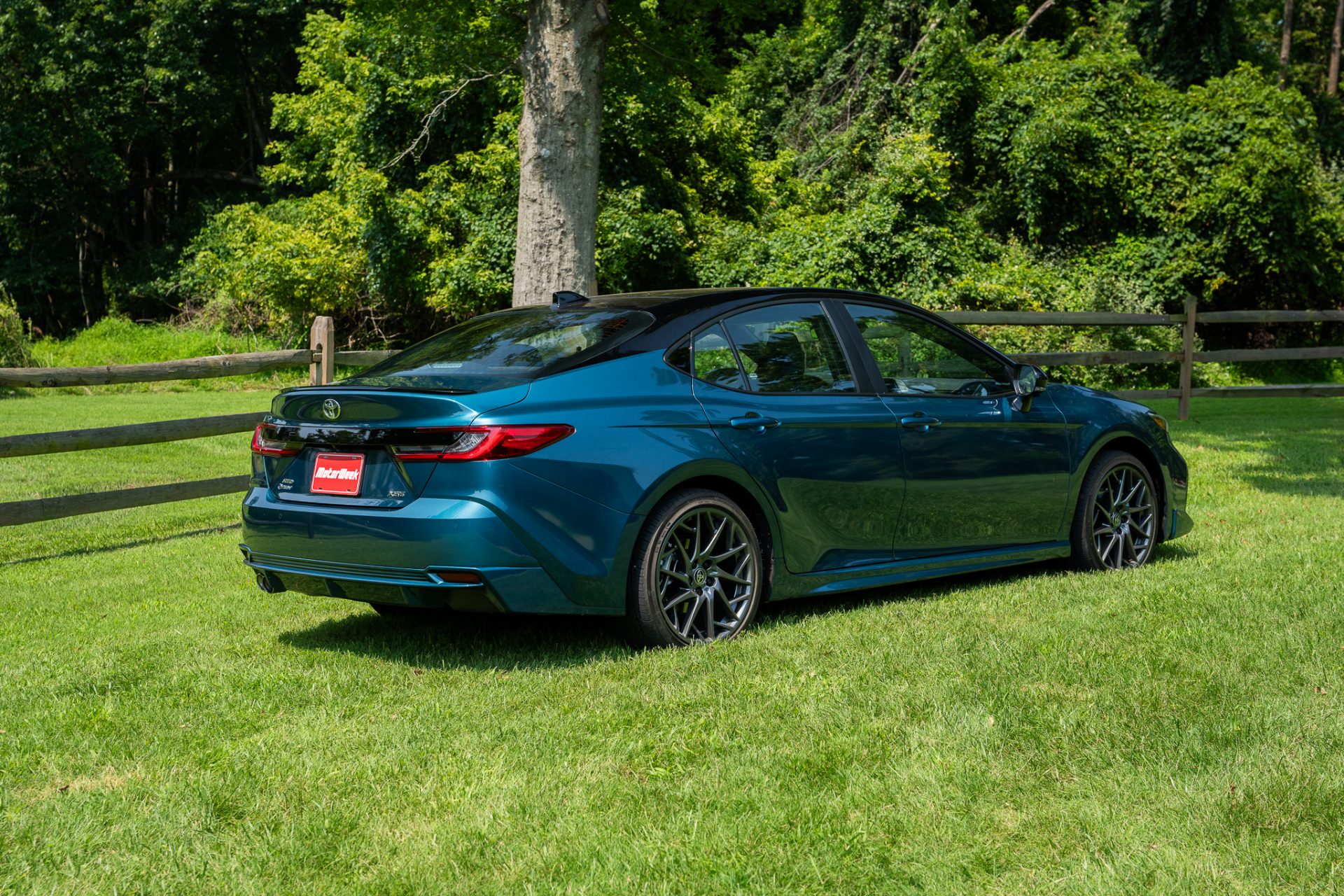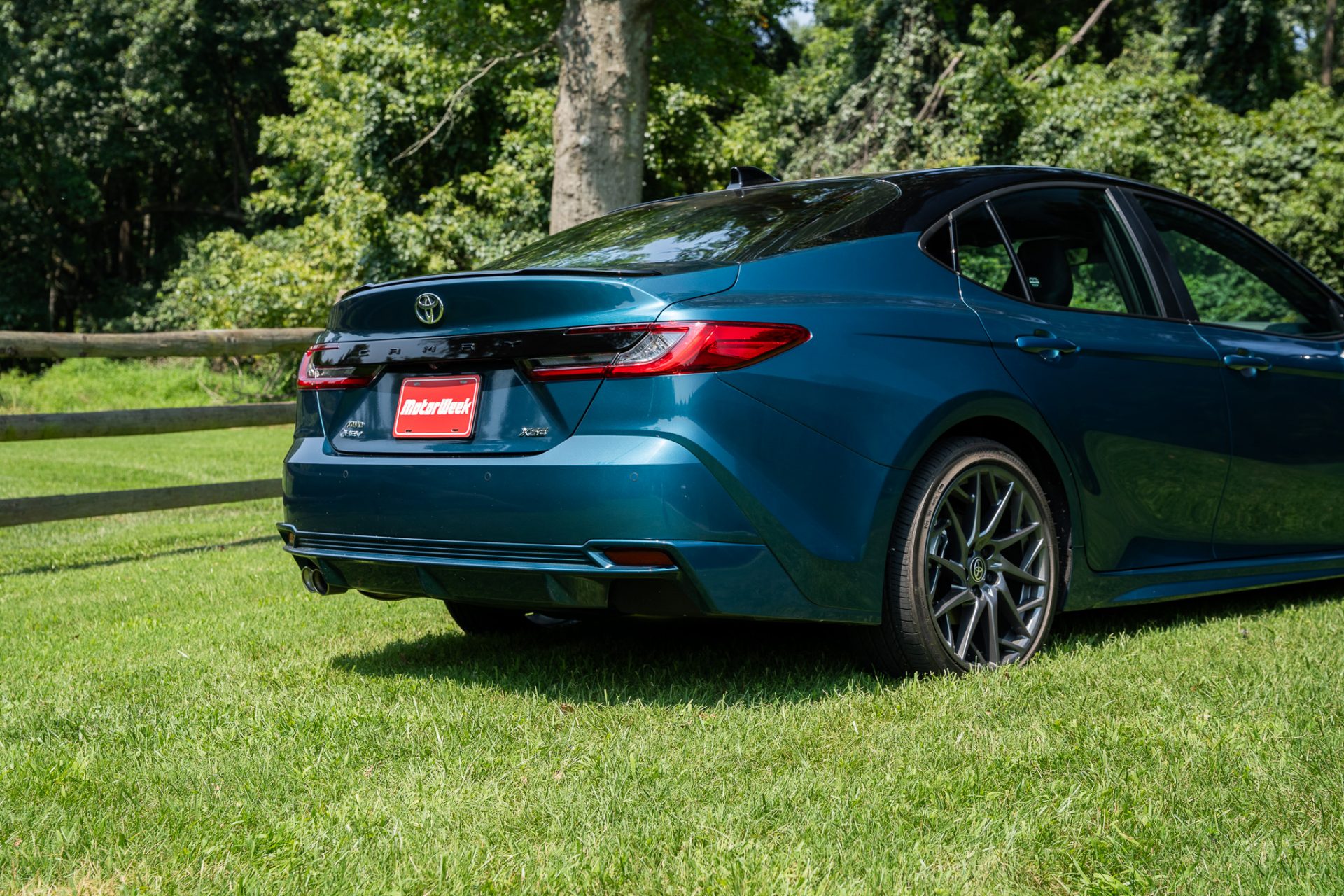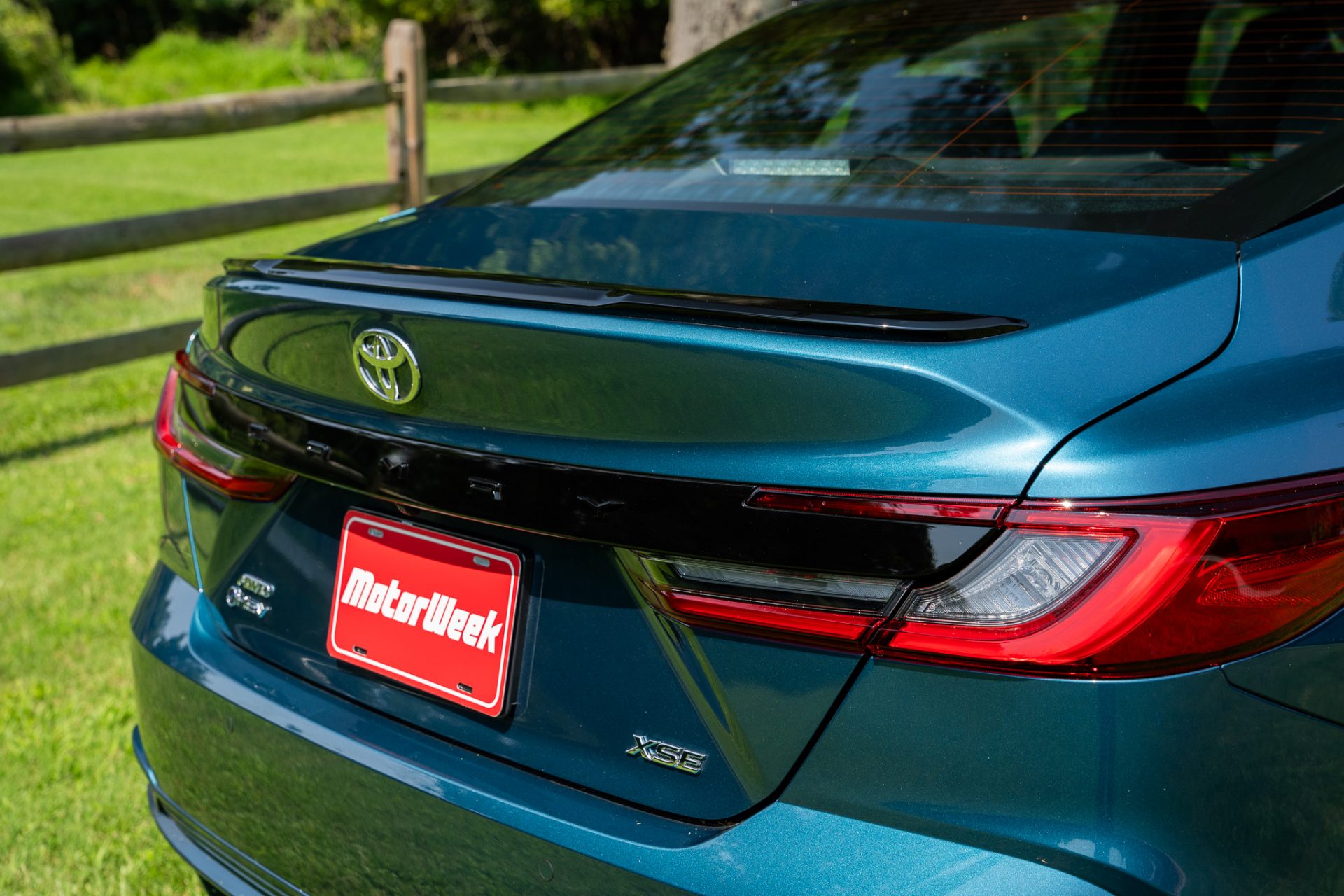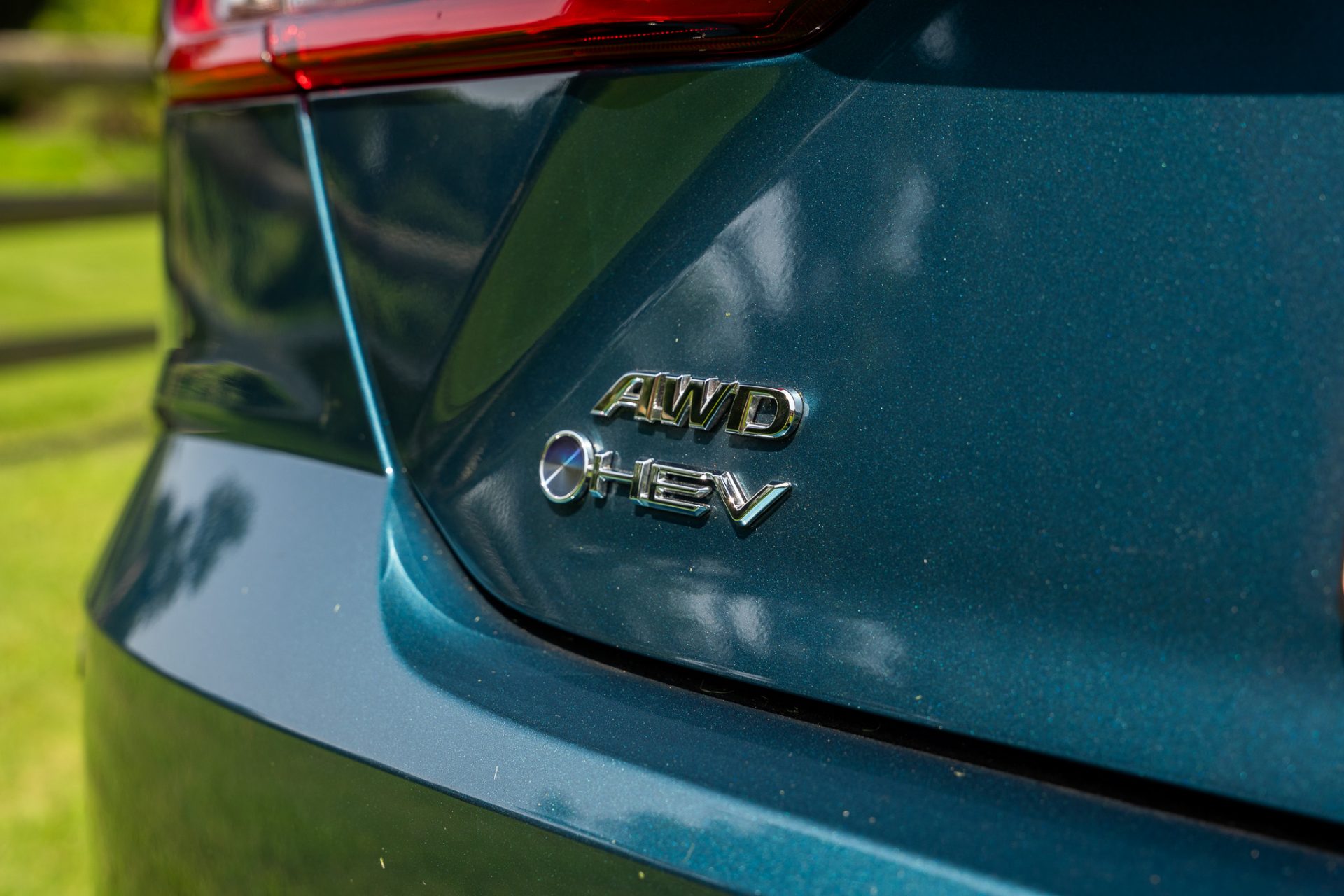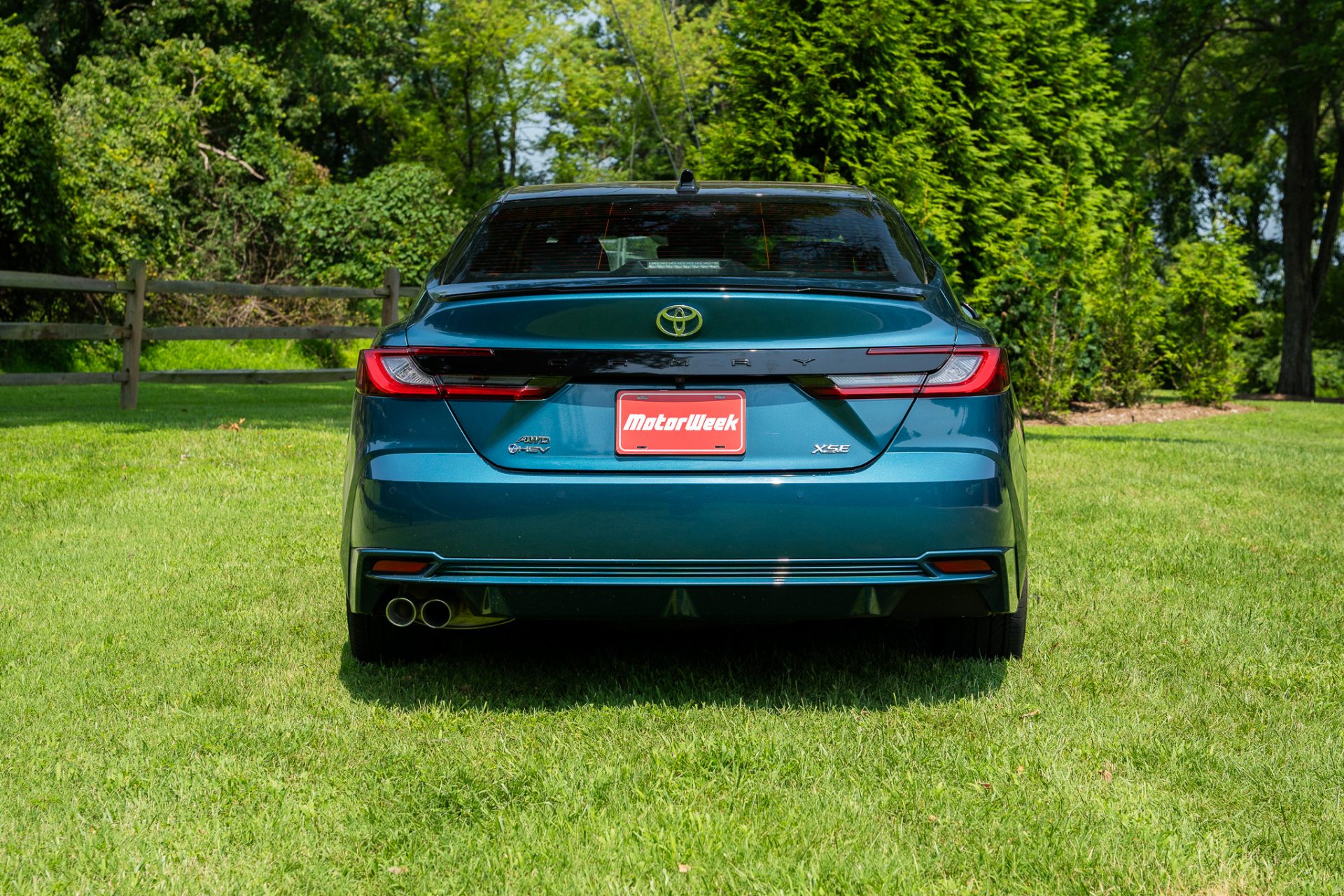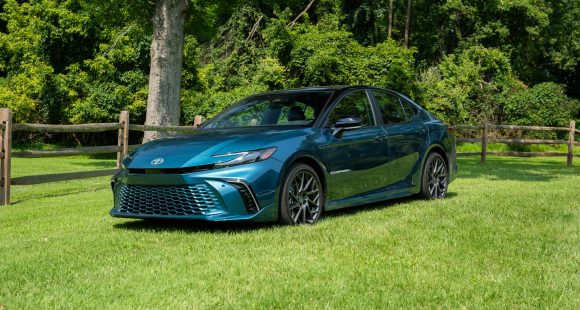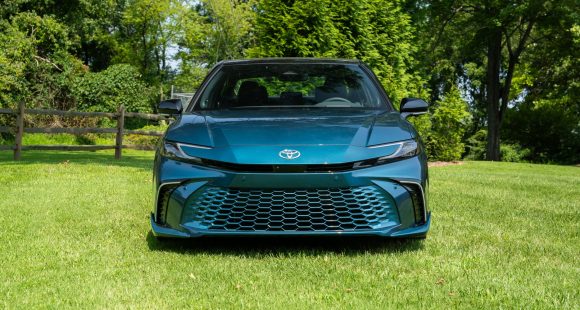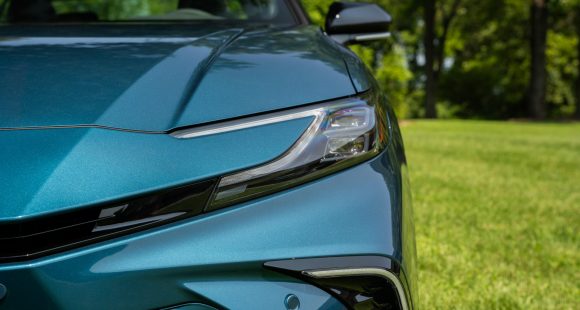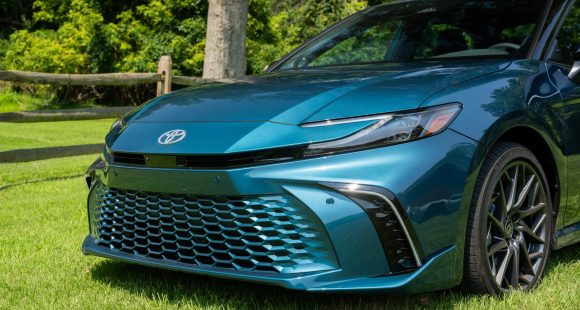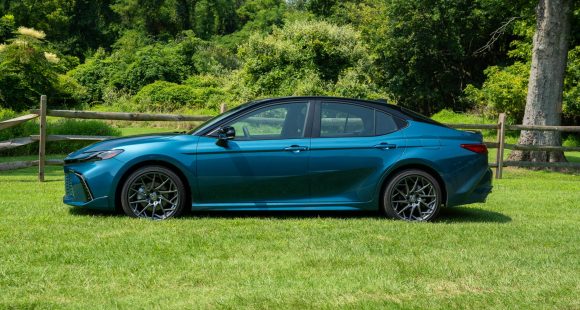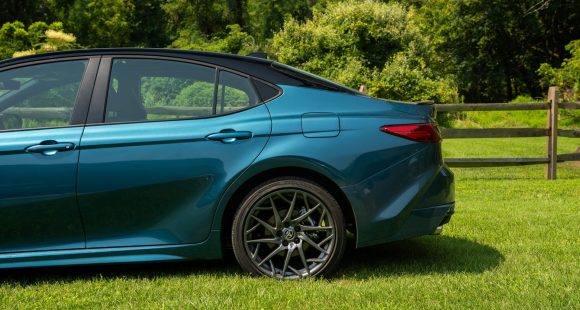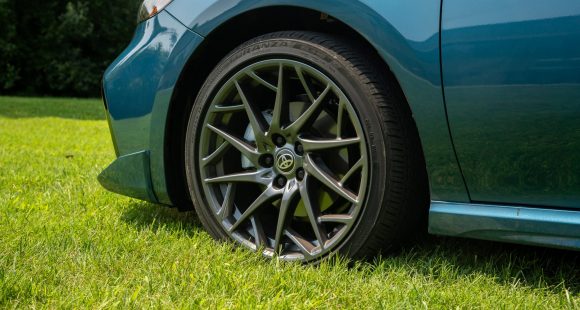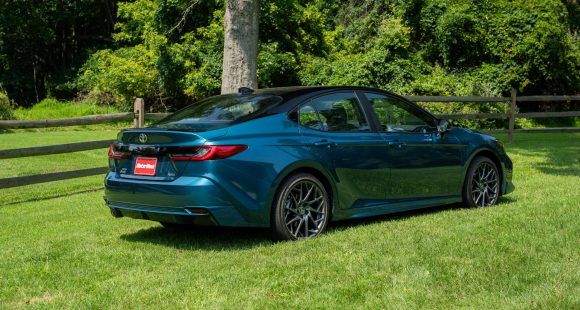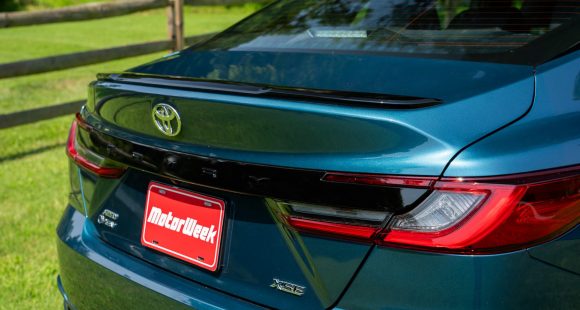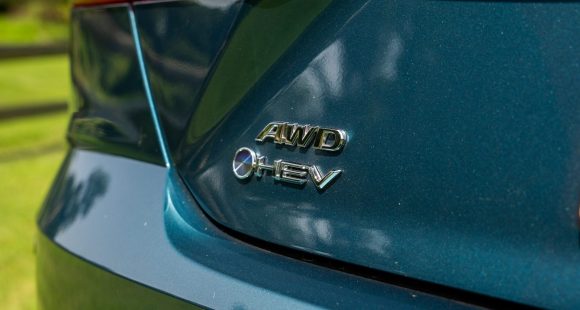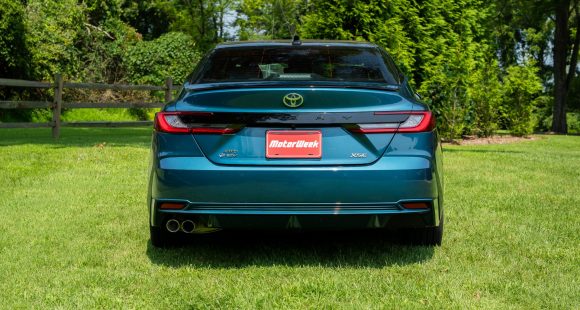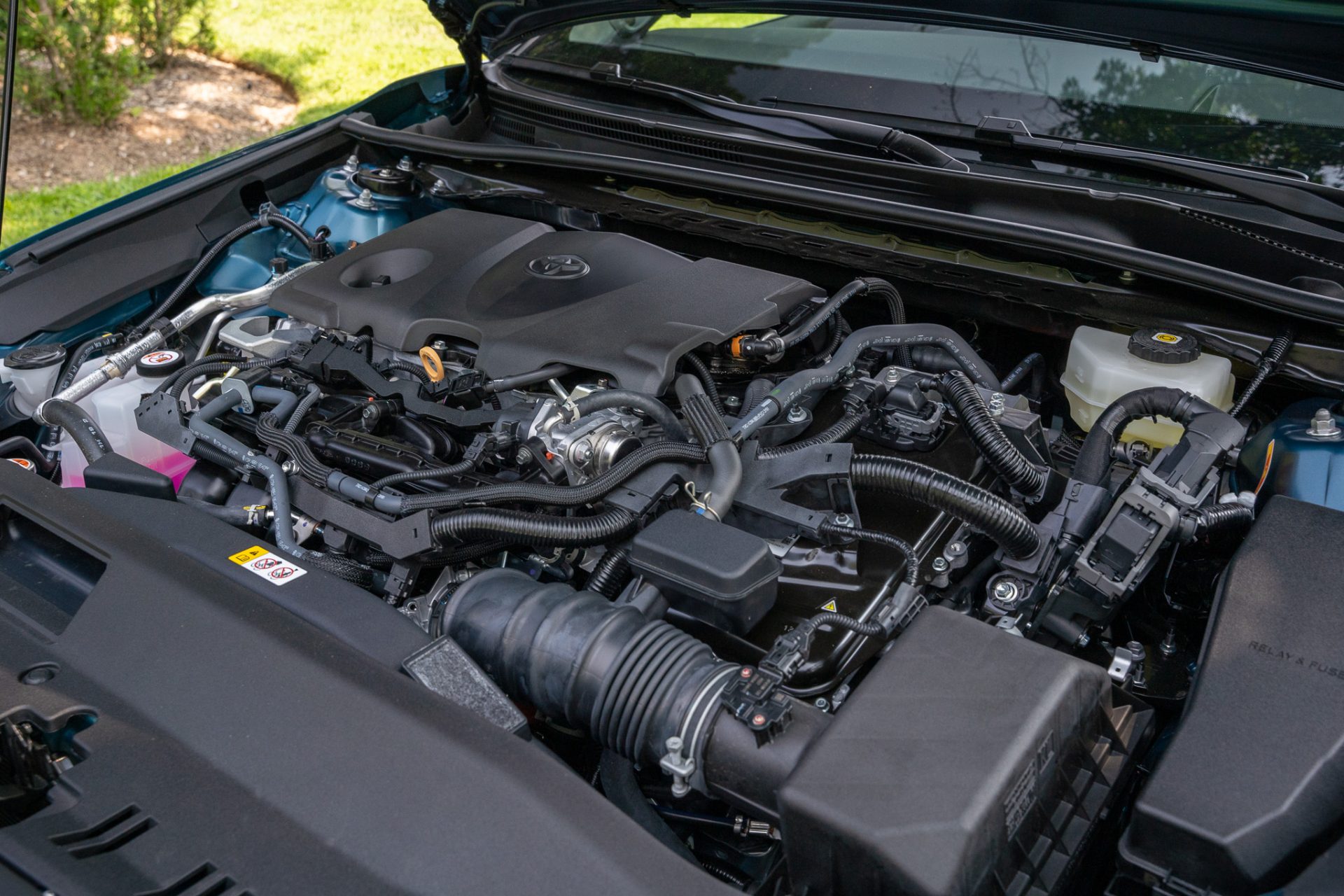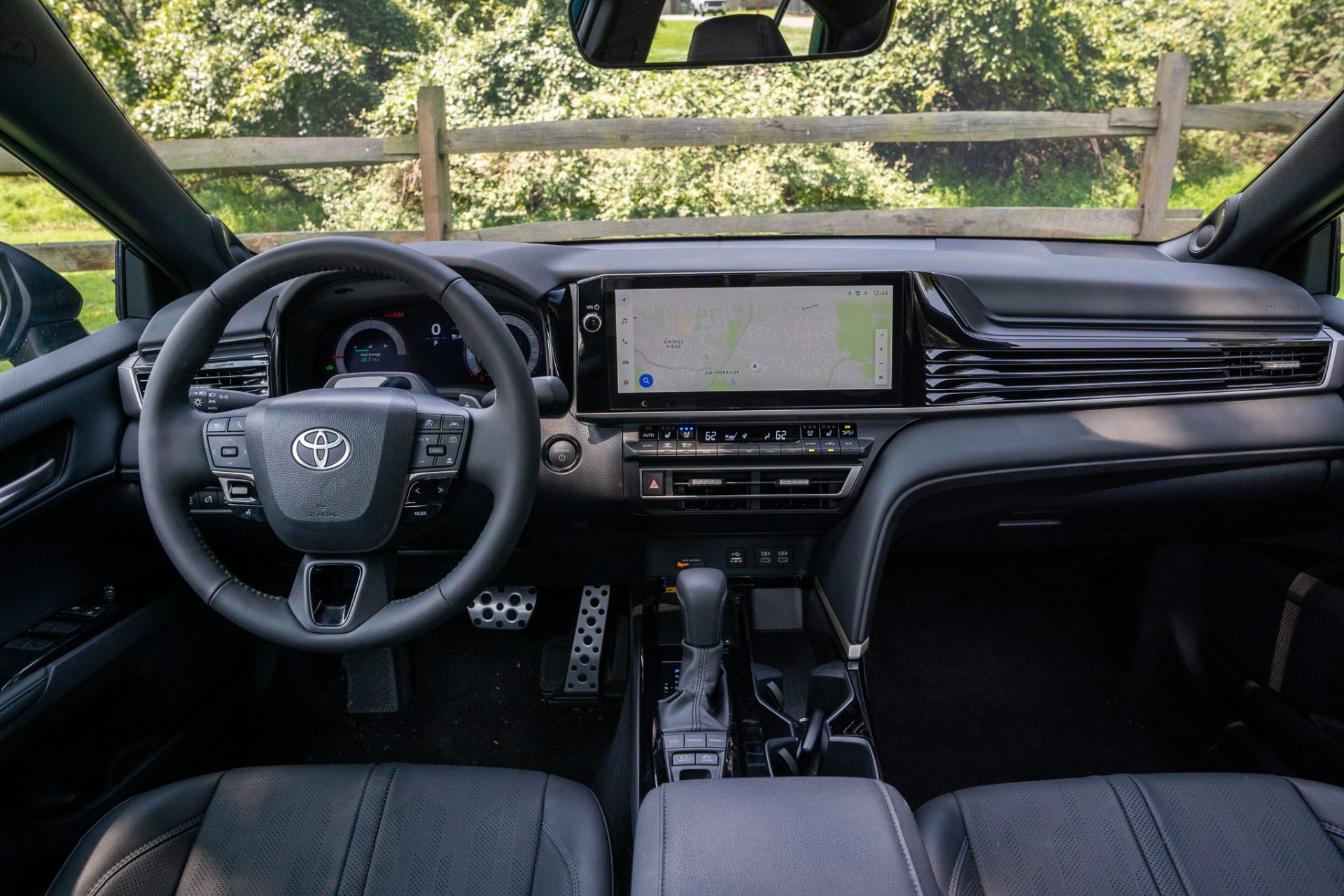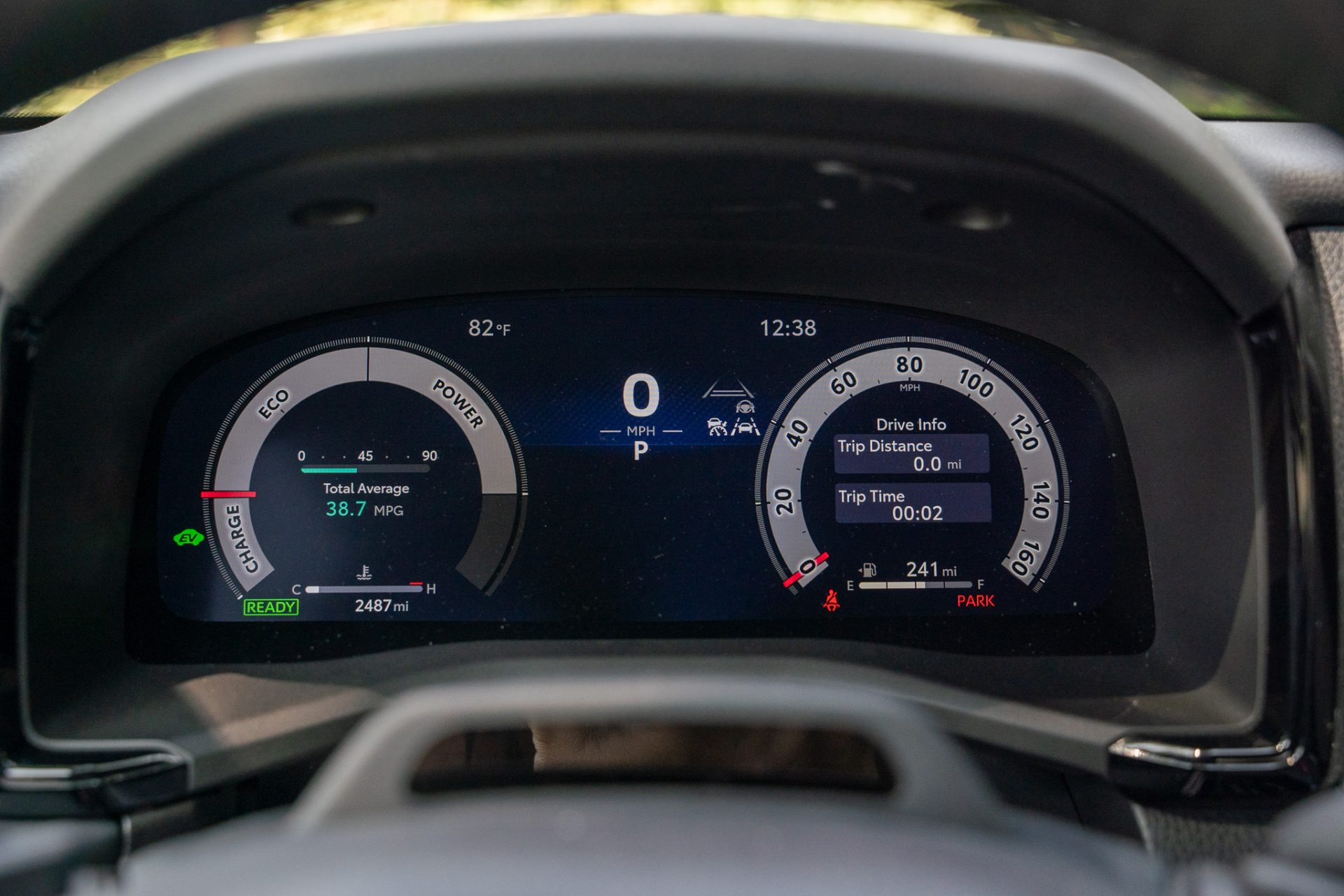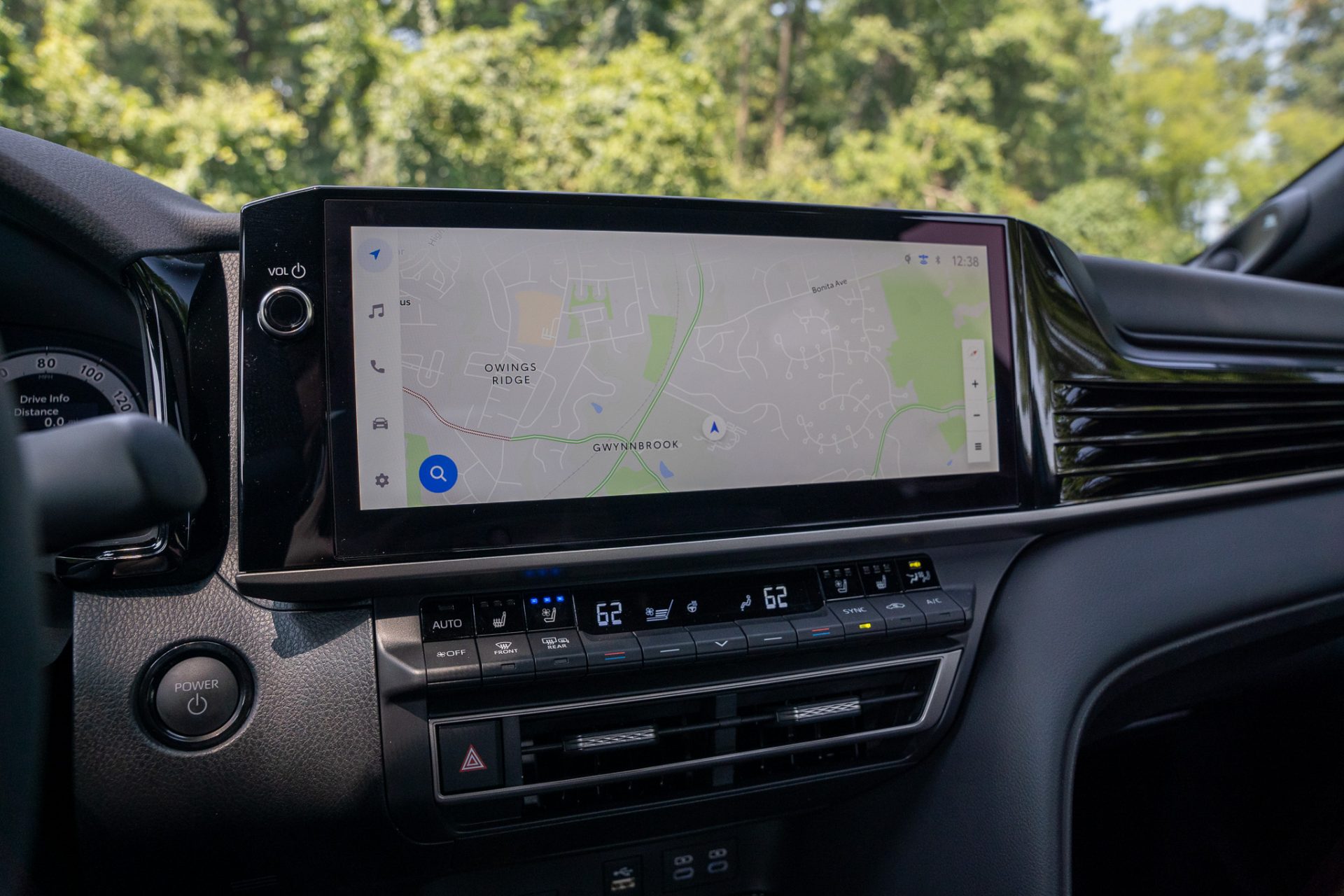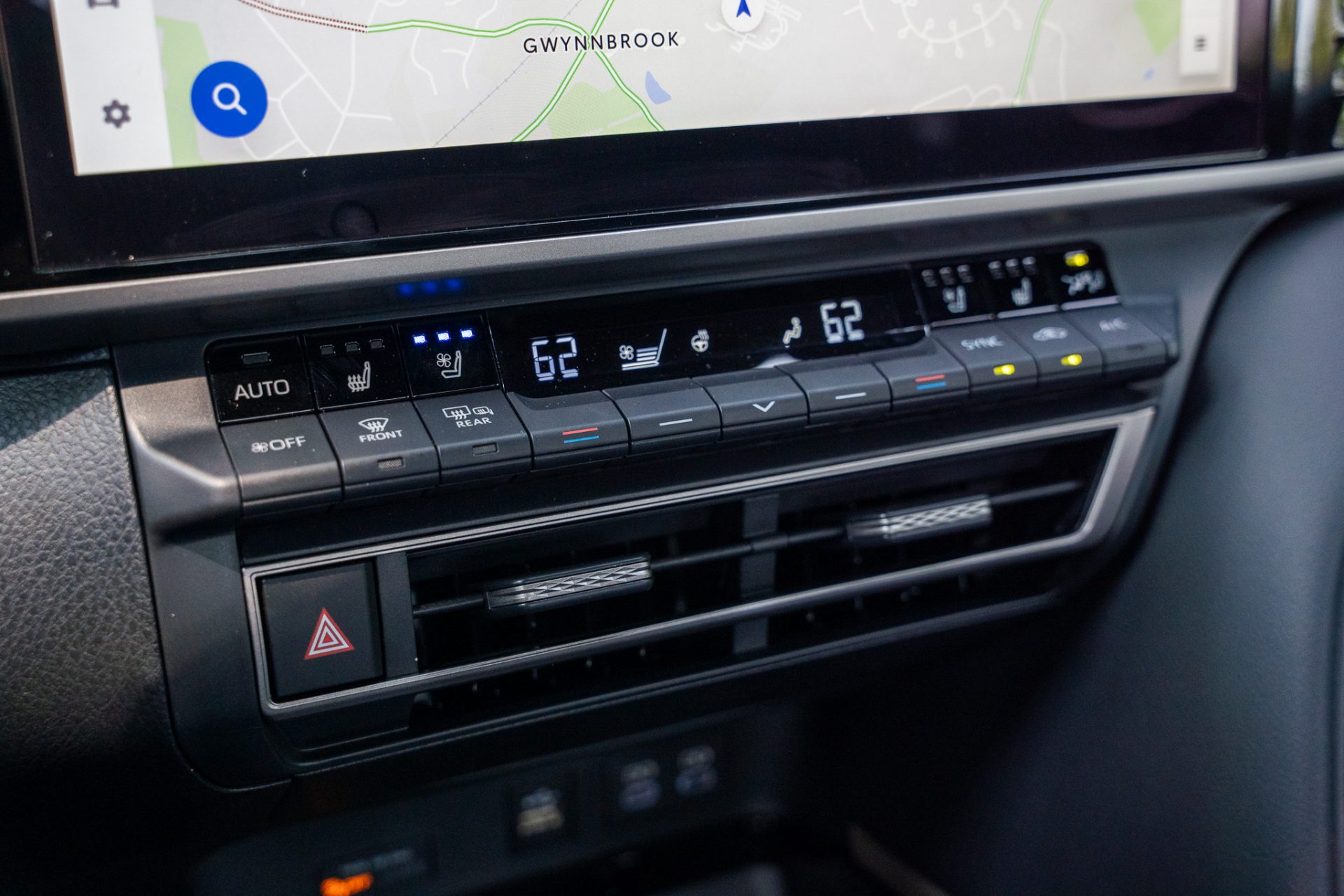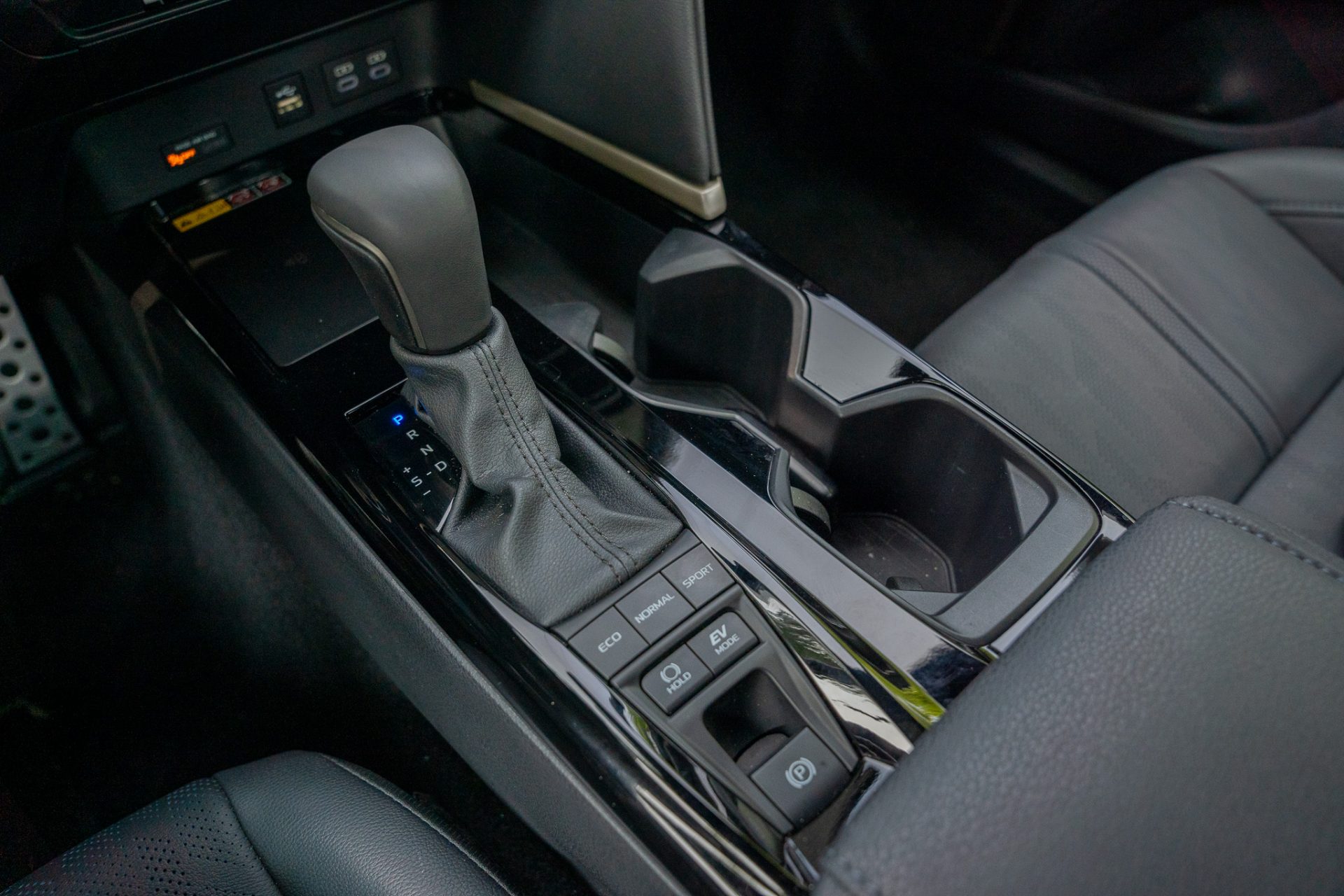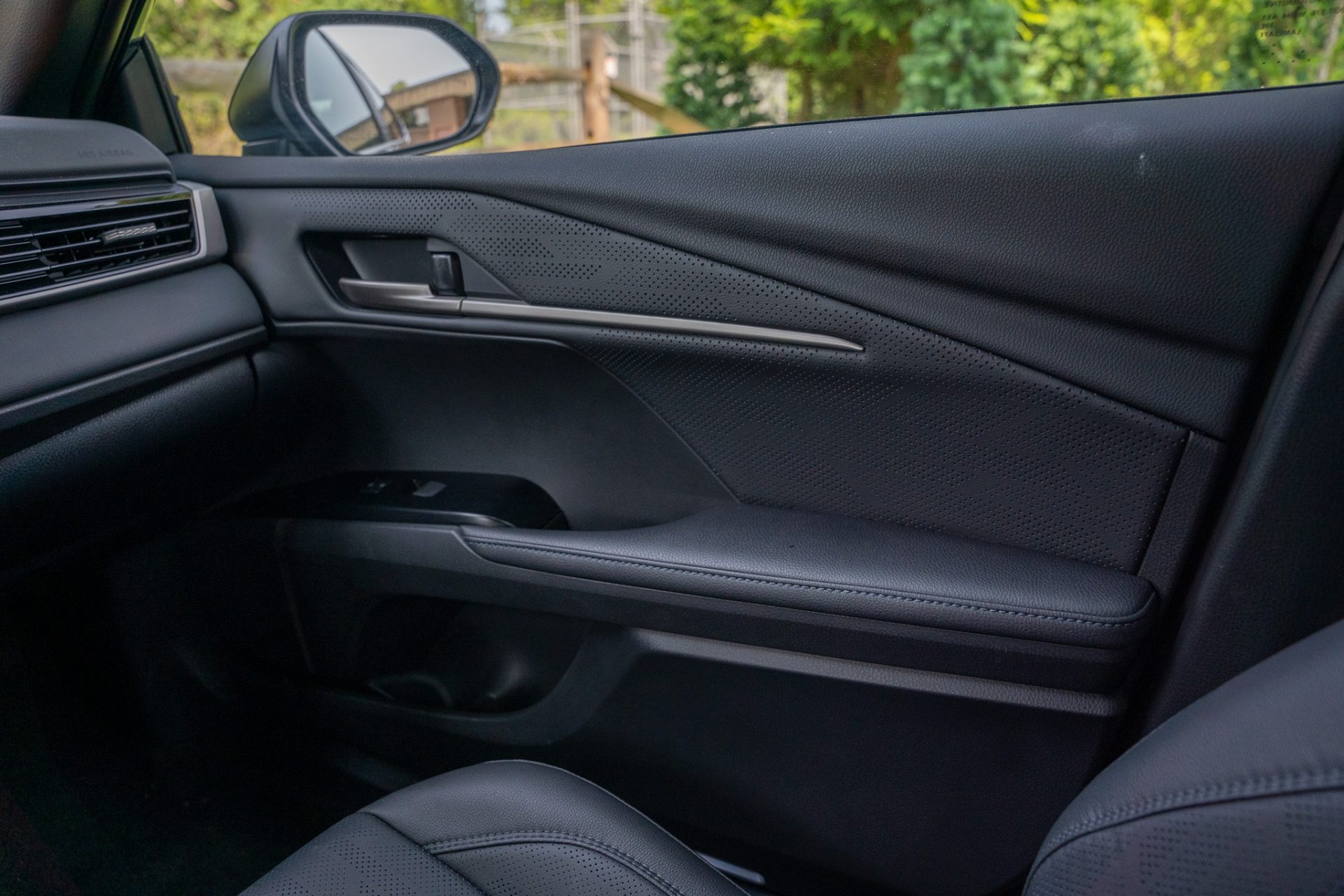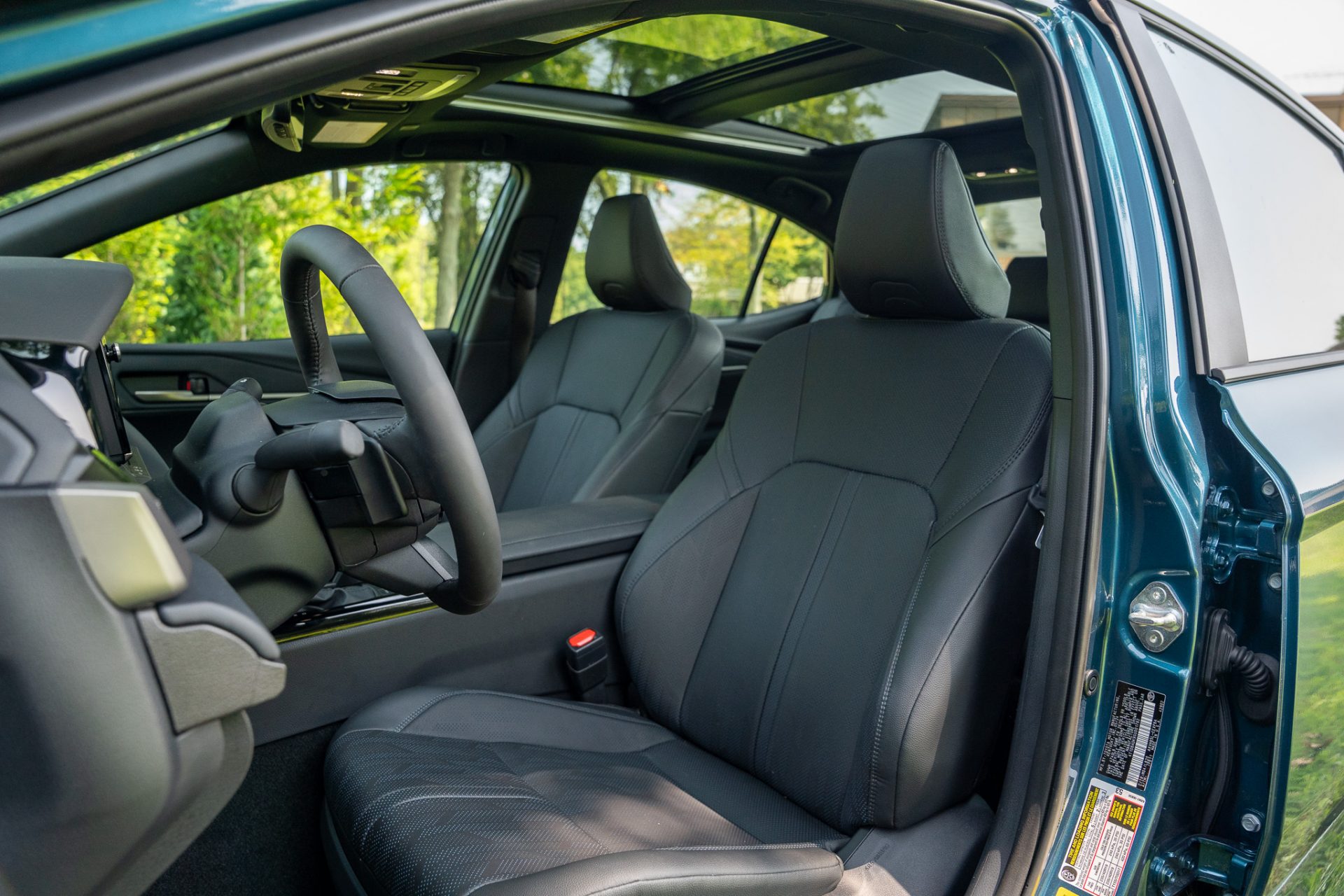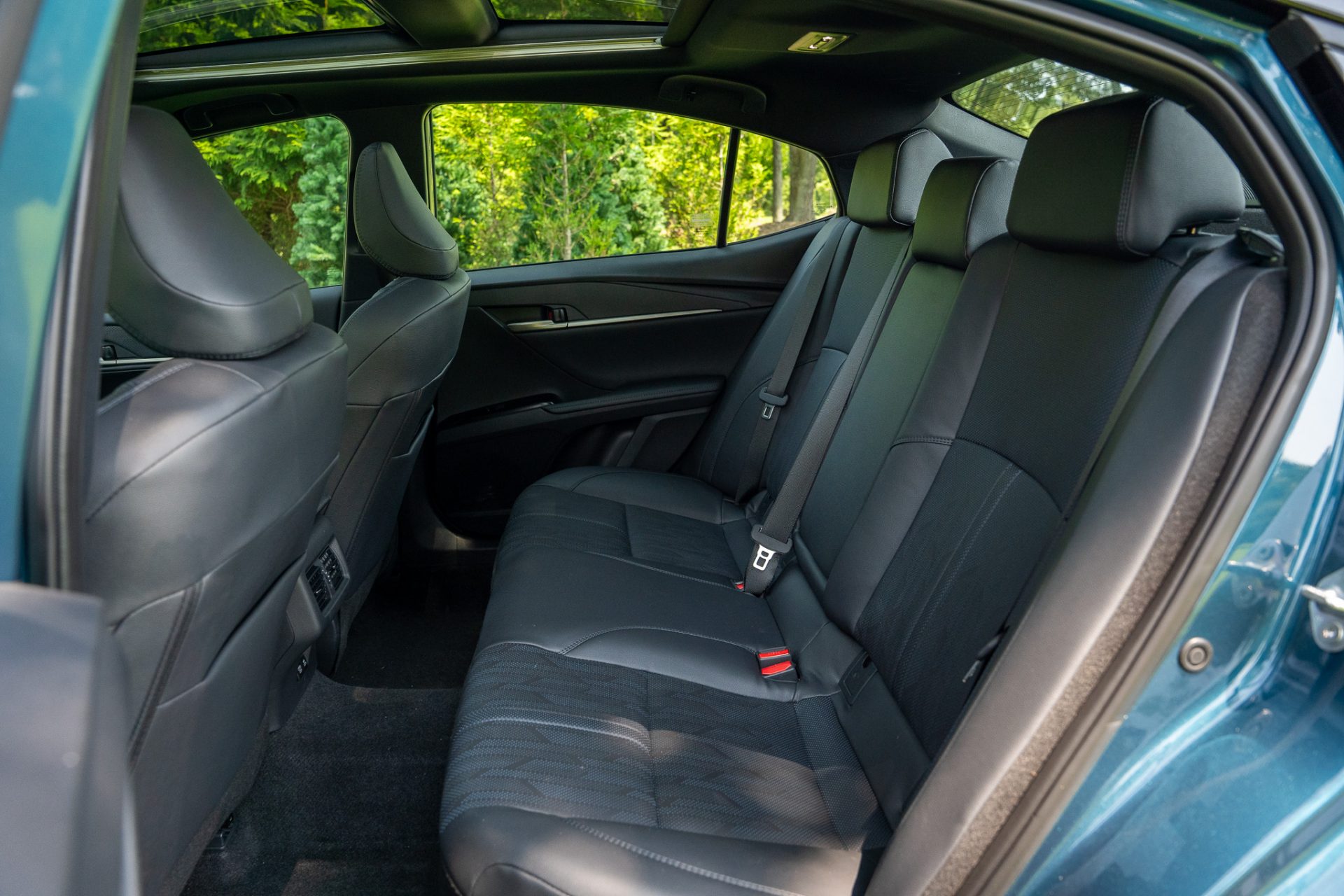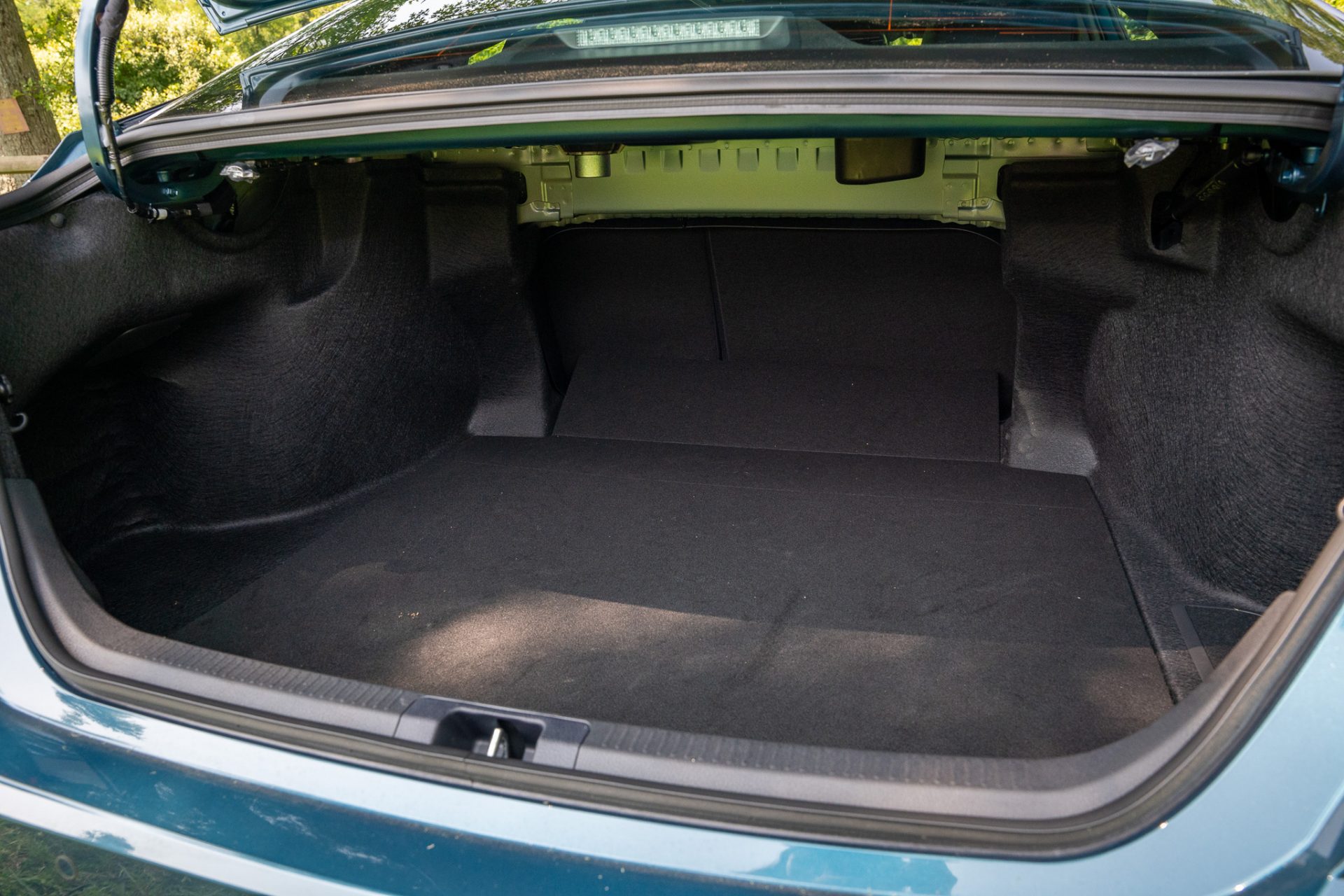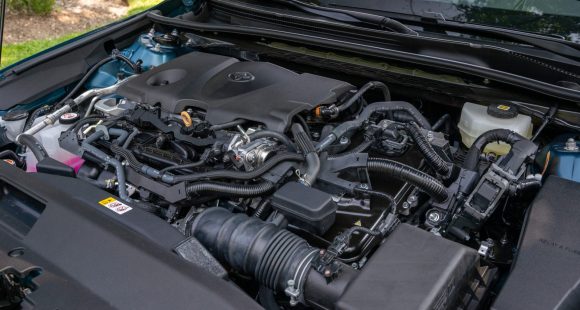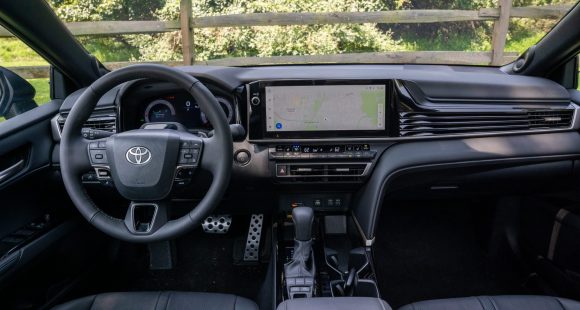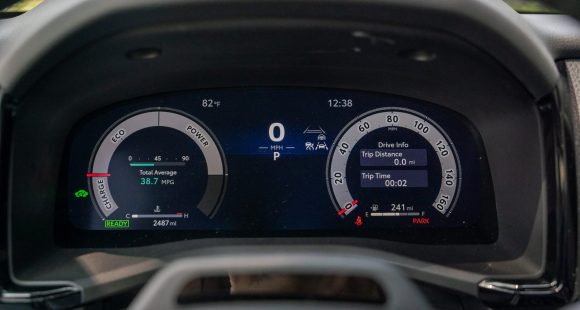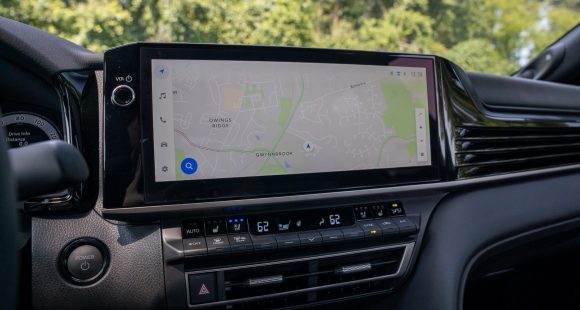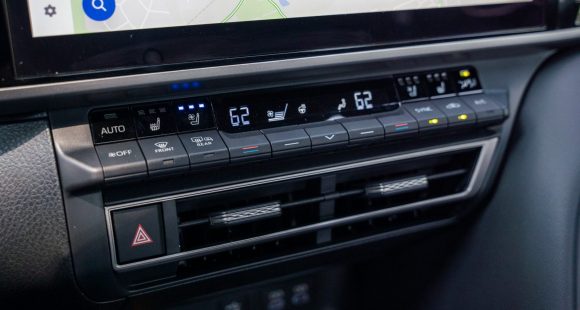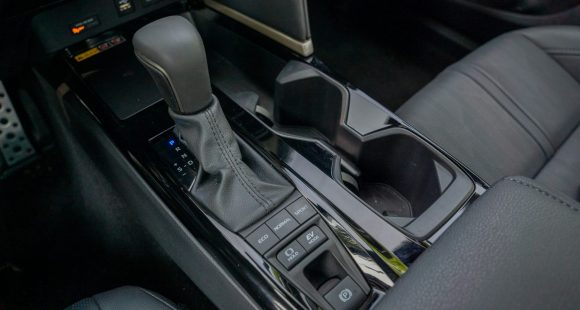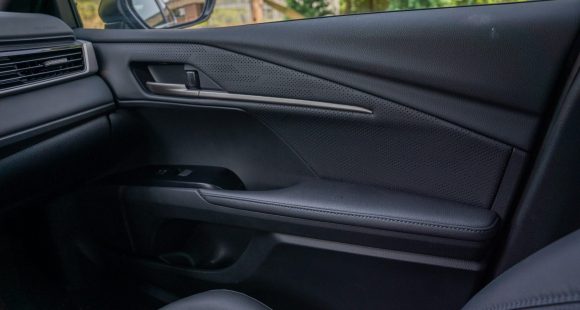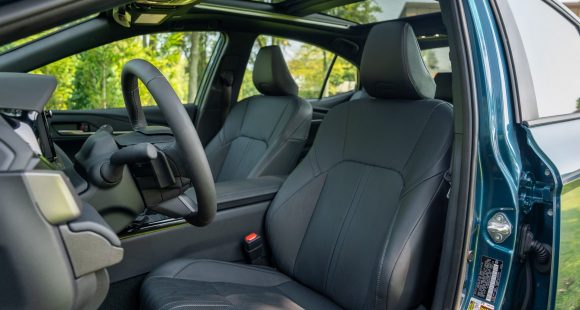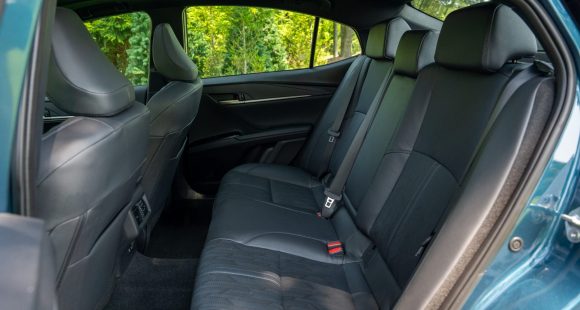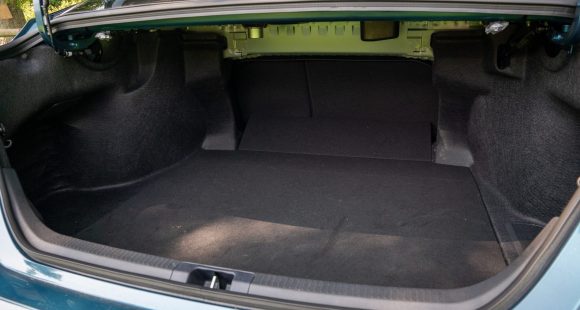2011 Ford Edge
For a brand known for its once top selling body-on-frame explorer SUV, the arrival of the 2006 Ford Edge midsize crossover utility really raised eyebrows. But Ford was just responding to the reality of surging gas prices and a flood of lighter, more efficient CUVs from import rivals. So, the Edge was a gamble that paid off. Now, Ford is doubling down with a mid-cycle edge revamp of the Edge. So let’s see if it’s again a winner.
Typical of what car makers call a freshening, the 2011 Edge maintains most of its exterior sheet metal, with major changes largely limited to front and rear fascias.
But, the addition of a big drop-jaw Ford-truck style grille, more expressive headlamp housings, and beefier wheels, does deliver a fresh impression, and makes the modern stance of the Edge even more so.
But, Ford smartly paid a lot more attention to upgrading the interior of the Edge. The instrument panel is improved in style, in fit and finish, with softer materials. Taurus influence is unmistakable.
Our well-equipped Edge Limited also included the latest Sync system which controls climate, stereo, navigation, and other functions.
Ford’s Sync voice recognition system has now morphed into MyFord Touch and it has three screens: two colorful info screens inside the gauge cluster, and a large touch screen in the center dash. Now it looks very much like a big smart phone display.
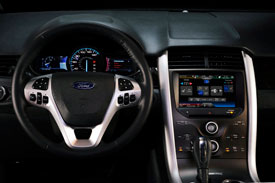 And like a smart phone, there’s no tactile feel, so you have to look at the screen when you actually want to make a touch selection. We find that distracting—and it’s also annoying, especially when the system locks up like it did for us.
And like a smart phone, there’s no tactile feel, so you have to look at the screen when you actually want to make a touch selection. We find that distracting—and it’s also annoying, especially when the system locks up like it did for us.
Now there are redundant controls for stereo and climate below, but they’re very sensitive, so again you have to look at what you’re touching.
On the other hand, Sync’s voice command system and Bluetooth connectivity are improved, but they’re still just a little fussy.
The two gauge screens are controlled by five-way switches on the steering wheel. Of all the controls, they are the most intuitive to use.
Available SD-card based navigation adds some neat tricks, too, like buildings appearing in 3D. But the best news here is the addition of SYNC TDI, an On-Star-like voice-prompt navigation feature.
Systems like Sync and MyFord Touch may very well be the future of automotive controls. Still, we also hope efforts continue to make voice command systems more intuitive, since you don’t have to take your eyes off the road to use those.
Edge remains a five-passenger crossover. The new front seats are more comfortable but could still use more lateral support.
Ford’s unique door keypad is standard on all but base trim. Blind Spot Monitoring is an option.
 Rear seat space and comfort remain excellent, even for six-footers. That still leaves room for 32.2 cubic feet of cargo space behind a large opening hatch. And, folding the seats down brings that space to a competitive 68.9 cubic feet.
Rear seat space and comfort remain excellent, even for six-footers. That still leaves room for 32.2 cubic feet of cargo space behind a large opening hatch. And, folding the seats down brings that space to a competitive 68.9 cubic feet.
Base power for the Edge is still a 3.5-liter V6. But it’s smoother, with 285 horsepower, up 20, and 253 lb-ft of torque, up three.
New is the Mustang’s 3.7-liter V6 in the Edge Sport with 305-horsepower and 280 lb-ft of torque.
Front-drive six-speed automatics are fitted to both sixes with Sport trim adding paddle shifters. All-wheel drive adds new Hill Start Assist.
Still to come is an Edge Ecoboost, with a direct-injected, turbocharged 2.0-liter I-4. But, even without Ecoboost, Edge made gains in fuel economy.
Our front-drive 3.5 has government fuel economy ratings of 19 city, 27 highway. That’s up one in the city and two on the highway. On our test loop, we averaged 22.8 mpg of regular.
The Edge’s moderate Energy Impact Score of 15.6 barrels of oil per annum, and 8.5-ton Carbon Footprint, mirror those of the Toyota Venza V6.
Edge track performance was well above par: zero to 60 in 7.1 seconds, and the quarter mile in 15.7 seconds at 93 miles per hour. Power was best in the upper revs.
There was a fair amount of body roll through the slalom, but it had no notable affect on stability. The Edge Sport with its 22-inch wheels does even better.
The all-disc braking system is also new, from booster, to calipers, to first time Brake Assist. Our average 60-to-0 stopping distance of 129 feet was far better than the 146 feet in our previous test. Still, the 2011 Edge exhibited moderate fade and nose dive.
The Edge is a solid long distance highway tourer. Improved sound insulation, including acoustic glass, complement powertrain tweaks for impressively low noise at speed.
Pricing for a base Edge SE starts at $27,995. Our front drive Limited begins at $34,995, and the Sport at $36,995. All-wheel drive adds $1,850 more.
The improvements in the 2011 Ford Edge are extremely well-thought out. More tech, more comfort, and more all-around performance, without compromising its already strong five-passenger utility traits. It’s a perfect pairing for the all-new seven-passenger Explorer due soon. And that will make even more of a competitive edge for Ford’s rivals to worry about.
Specifications
- Engine: 3.5-Liter V6
- Horsepower: 285
- Torque: 253 Lb Feet
- 0-60 MPH: 7.1 Seconds
- 1/4 Mile: 15.7 Seconds @ 93 MPH
- 60-0 MPH: 129 Feet
- EPA: 19 MPG City/ 27 MPG Highway
- Mixed Loop: 22.8 MPG
- Energy Impact: 15.6 Barrels Oil/Yr
- CO2 Emissions: 8.5 Tons/Yr
2025 Toyota Camry
Camry Goes All Hybrid, But It’s No Prius Sedan
Whether you call it Camry or Cam-ray, you have to call this Toyota the best-selling sedan in the U.S. for 2023. Not bad for a car in the last year of its lifecycle. That’s right, the Camry is all-new for model year 2025. So, let’s find out if this ninth-generation Camry can stay truly competitive in this world of SUVs and crossovers.
There have been many variations of the Toyota Camry over the last 40 years; some more exciting than others, but all have been incredibly comfortable, efficient, and practical. That theme carries over for the all-new 2025 Toyota Camry.
Though it feels like they purposely avoided any type of “wow” factor inside. Sure, there are the expected big screens for multimedia and gauge display, but they kept them separated, keeping the overall vibe traditional and classy rather than flashy. They’ve also retained lots of physical controls, added some unique materials, and attempted to open up the space a bit, knowing that they’re going up against EVs these days too, not just usual family sedan nameplates.
The new Camry follows Toyota protocol of basic LE series and more sport-oriented SE series; adding an X in front of either adds a bit more content. For our XSE tester that mostly means a flashier exterior that includes black trim and rear spoiler, dual exhaust tips, and 19-inch wheels, but it also gets a sport-tuned suspension.
Following the pattern of many recent Toyotas, Camry now has an all-hybrid lineup. Toyota’s newest, fifth-generation hybrid system mates to a 2.5-liter I4 engine for the first time. It works with two electric motors for a 225-horsepower output, 17 more than the outgoing Camry hybrid. And it delivers up to 51 mpg Combined. All-wheel-drive versions add an additional electric motor in back for powering the rear wheels for an increased total output of 232 horsepower; and AWD is available for all trims.
This is easily the best handling Camry we’ve driven.
Our all-wheel-drive tester did feel quite peppy on the street, with a competent suspension that soaked up bumps easily without feeling soft or floaty. At the test track, there was great grip off the line, and a substantial punch of power to get us to 60 in 6.9 seconds. There was a nice little engine growl at takeoff too, but it quickly turned into a consistent droning noise due to the electronically controlled CVT trans. There are some simulated gears you can play with, but they don’t really add much to the performance; our best quarter-mile time was 15.2 seconds at 94 mph.
This is one case where “sport-tuned suspension” seems to really mean something, as this is easily the best handling Camry we’ve driven. Minimal body roll, great road feel, and steering that was both tight and responsive. All-wheel-drive grip was great through the cones, but most people will find it much more beneficial when driving on slippery roads.
The hybrid’s regen braking is not the most natural feeling, but in panic stops the brakes clamp down quickly, causing some aggressive nosedive, but ultimately resulting in very short, 110-foot stops from 60.
As mentioned earlier, Government Fuel Economy Ratings are as high as 51 Combined, but all-wheel-drive XSEs come in at 44 City, 43 Highway, and 44 Combined, though our lead foot test loop saw just, but still noteworthy, 42.6 mpg of Regular.
Pricing starts with the base LE at $29,535; all-wheel drive is another $1,525 if you want it. XSE tops out the range at $35,735.
While the midsize four-door sedan is not the suburban staple that it once was, the Camry absolutely remains a staple of the Toyota lineup, and even kept its status as America’s best-selling car last year. So, it looks like there’s no stopping the Camry, as the more efficient 2025 Toyota Camry is better-looking, has better performance, and is a better all-around family car than ever.
Specifications
As Tested
- Engine: 2.5-liter I4
- Transmission: e-CVT
- Horsepower: 232
- EPA: 44 City | 43 Highway | 44 Combined
- 0-60 mph: 6.9 seconds
- 1/4 Mile: 15.2 seconds at 94 mph
- Braking, 60-0 (avg): 110 feet
- MW Fuel Economy: 42.6 mpg (Regular)







